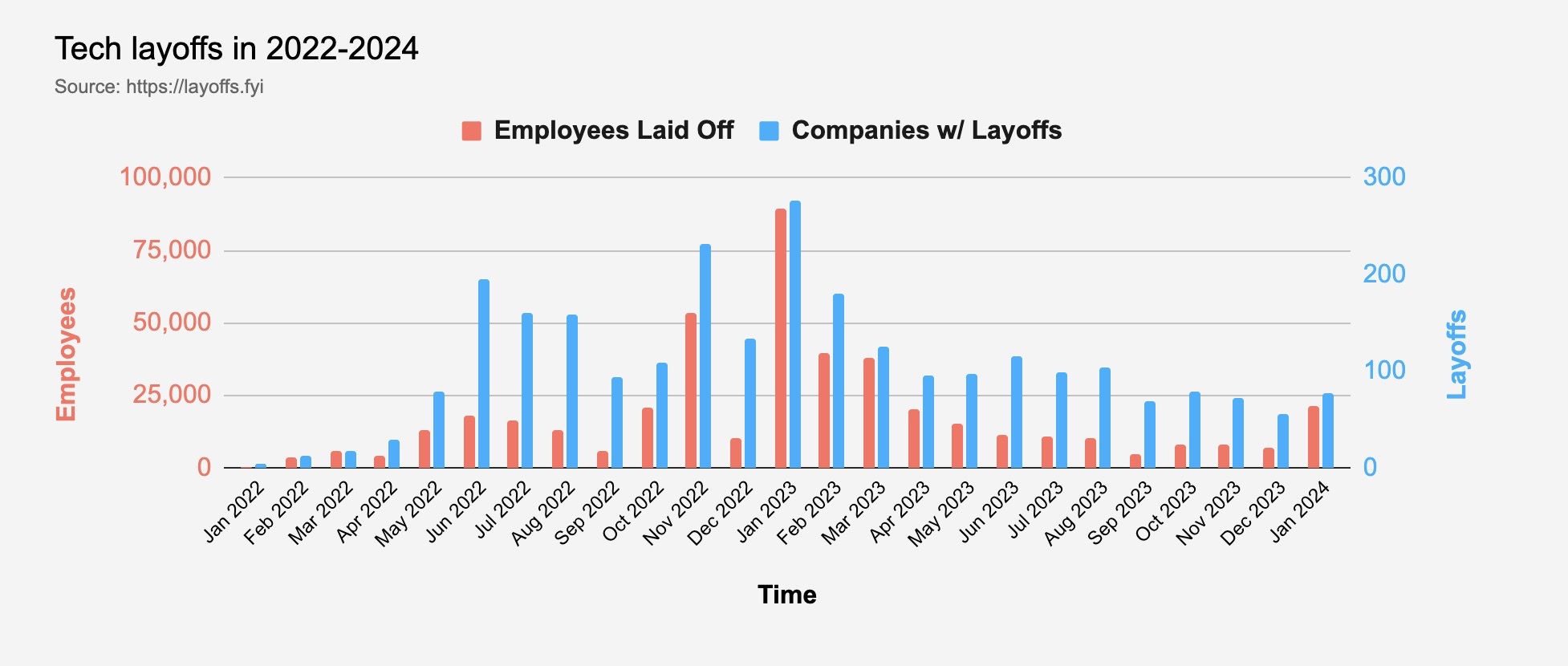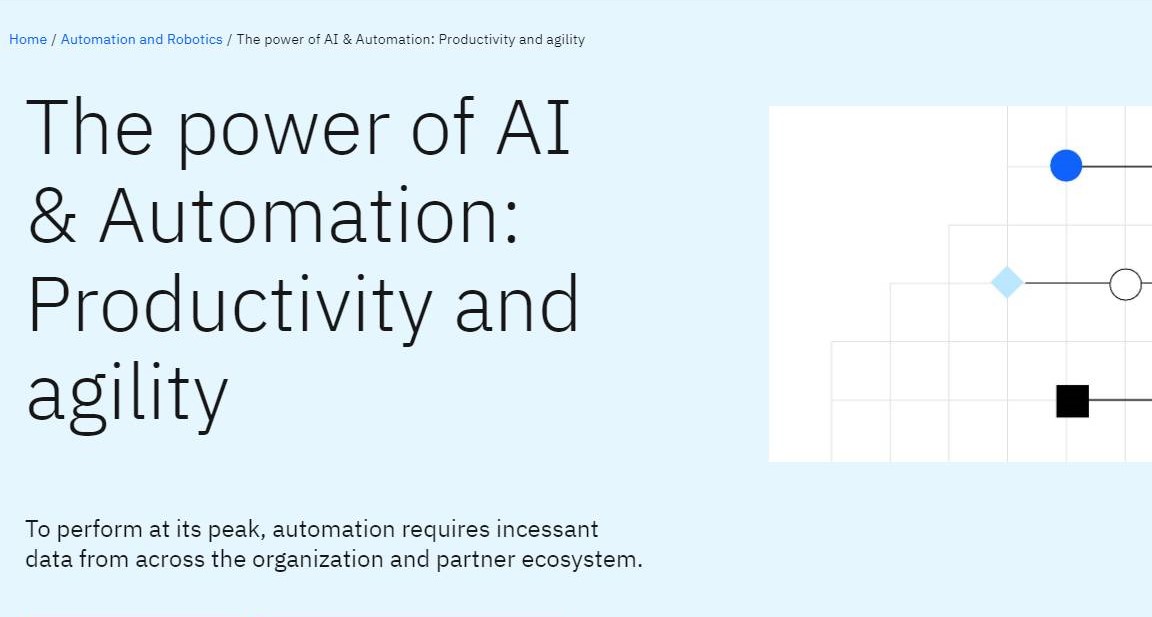Tech layoffs in 2024 show the ‘year of efficiency’ is here to stay, it just won't be quite as ruthless
Tech layoffs in 2024 appear to be gathering momentum, with a host of major firms shedding staff just weeks into the new year - should we be worried?


2023 was a horrendous year for tech workers globally, with mass layoffs impacting hundreds of thousands of staff. Tech layoffs in 2024, however, appear to be gathering pace since the turn of the new year.
Major tech firms including Google and Amazon have both announced cuts over the last week, with the former confirming plans last week to lay off more than a thousand staff across several divisions, including its voice assistant unit and workers in its Pixel and Fitbit segments.
Amazon, meanwhile, has also been quick off the mark in 2024, cutting hundreds off staff while Duolingo and others have announced layoffs. Within the space of just three weeks, nearly 11,000 workers have been laid off globally, according to figures from Layoffs.fyi, begging the question of whether we could see a fresh wave of mass job cuts across the industry.

But let’s be clear: the numbers so far pale in comparison to what we witnessed in early 2023. The global tech industry entered 2023 with a lingering sense of dread due to what appeared to be spiraling economic conditions in the wake of the boom days of the pandemic.
The pandemic-fueled gravy train was never going to last, and it became glaringly obvious that employers were going to be ruthless across 2023. Amazon and Salesforce were among the first to confirm layoffs last year, announcing 26,000 job cuts between them.
Both firms cited “uncertain market conditions” as a key factor behind the wave of layoffs.
In January 2023, Amazon and Salesforce were joined by a host of industry heavyweights in their slashing and dashing of roles, with Microsoft, Google, IBM, and more all confirming cuts.
Get the ITPro daily newsletter
Sign up today and you will receive a free copy of our Future Focus 2025 report - the leading guidance on AI, cybersecurity and other IT challenges as per 700+ senior executives
Microsoft led the way with 2023 layoffs, having cut the equivalent of around 5% of its global workforce. Google slashed 6% of its global staff in turn, with chief exec Sundar Pichai attributing the cuts to an inflated pandemic-era hiring boom.
All told, more than 89,000 tech workers were laid off in January 2023 alone, according to Layoffs.fyi data. These figures represented just the beginning of a wave of cuts that lasted much of the year, resulting in companies turfing out more than 262,000 tech workers.
Tech layoffs in 2024 were always going to happen
Meta chief executive Mark Zuckerberg described 2023 as a ‘year of efficiency’, but it seems this period of consolidation and cost-cutting didn’t quite go far enough for some.
Pandemic-era hiring sprees were logical in a remote world, but that was always going to come back to bite some organizations. Similarly, macroeconomic conditions, while not quite in the woeful state they were in early 2023, have still remained challenging for firms globally.
Announcing its own job cuts earlier this month, Google chief executive Sundar Pichai said the move was aimed at “removing layers to simplify execution and drive velocity in some areas”.
This is clearly Pichai’s ‘year of efficiency’ pitch, and it speaks volumes. Especially given the current enterprise technology focus – generative AI.
Horror stories of widespread AI-related job cuts haven’t quite come to fruition yet, but there are lingering signs that many organizations are beginning to cut staff with this in mind. Google itself has already cut jobs in its ad sales division amid a shift to automation.
PwC’s recent CEO survey, for example, provided a fleeting glimpse into what the possible justification behind belt-tightening measures might be.
One-quarter of respondents told the consultancy they expect to “reduce headcount” by at least 5% in the next year due to the integration of generative AI tools across their organization.
RELATED RESOURCE

Discover why connecting data across business operations and IT environments will be key to success
DOWNLOAD NOW
It’s not all bad news, though. These cuts will likely be offset by hiring in other business-critical areas, the study found. More than half (56%) said they plan to hire in other areas.
Based on the current rate of layoffs so far in 2024, the year ahead doesn’t appear to be quite as disastrous as the one prior. But that isn’t to say job cuts still won’t sting for thousands globally.
A positive indication of perhaps an alternative approach to this situation has already been exemplified by SAP. The German software giant announced a comprehensive ‘restructuring’ program in January aimed at integrating generative AI tools in key business segments.
While this restructuring initiative will impact 8,000 roles, the firm was keen to highlight that this won’t be a ruthless hatchet job for thousands of beleaguered staff.
Indeed, the program will see the company invest heavily on staff training to potentially have affected workers gain relevant skills with the intention of moving them into different segments of the firm.
This could set a benchmark for companies seeking to offload staff in a bid to deliver cost savings while simultaneously bolstering workforce skills capabilities to contend with what has been a well-publicized, growing AI skills gap over the last year.

Ross Kelly is ITPro's News & Analysis Editor, responsible for leading the brand's news output and in-depth reporting on the latest stories from across the business technology landscape. Ross was previously a Staff Writer, during which time he developed a keen interest in cyber security, business leadership, and emerging technologies.
He graduated from Edinburgh Napier University in 2016 with a BA (Hons) in Journalism, and joined ITPro in 2022 after four years working in technology conference research.
For news pitches, you can contact Ross at ross.kelly@futurenet.com, or on Twitter and LinkedIn.
-
 Should AI PCs be part of your next hardware refresh?
Should AI PCs be part of your next hardware refresh?AI PCs are fast becoming a business staple and a surefire way to future-proof your business
By Bobby Hellard
-
 Westcon-Comstor and Vectra AI launch brace of new channel initiatives
Westcon-Comstor and Vectra AI launch brace of new channel initiativesNews Westcon-Comstor and Vectra AI have announced the launch of two new channel growth initiatives focused on the managed security service provider (MSSP) space and AWS Marketplace.
By Daniel Todd
